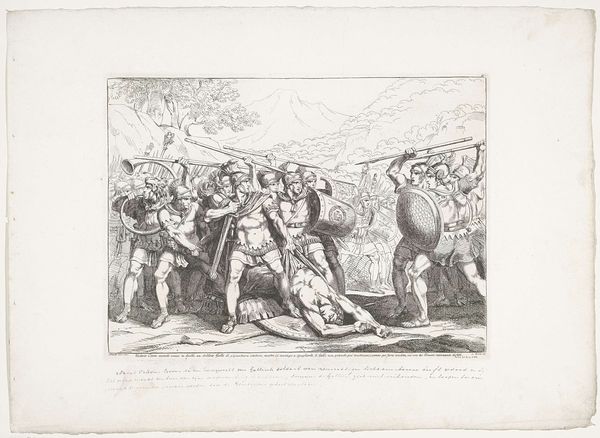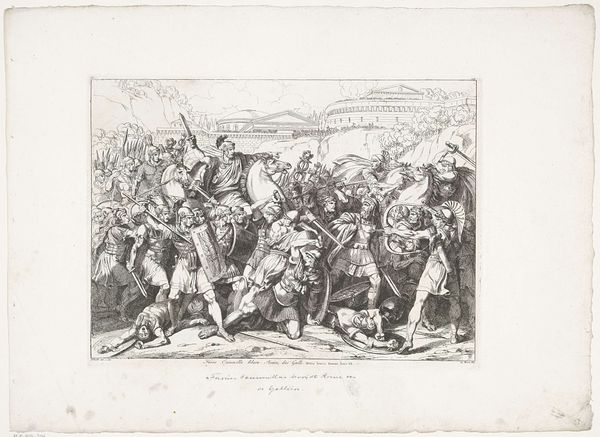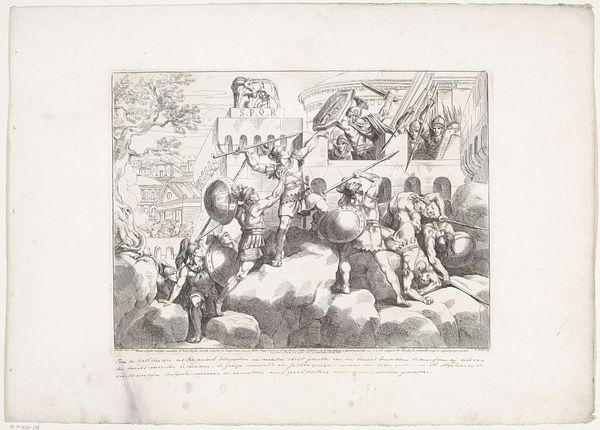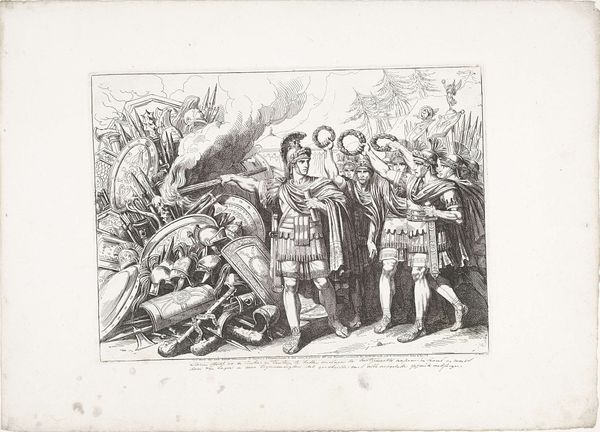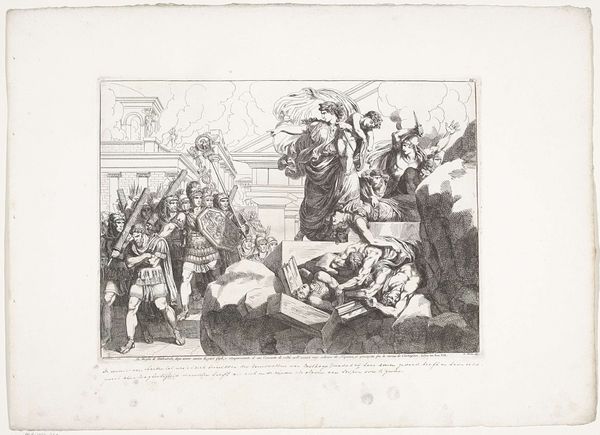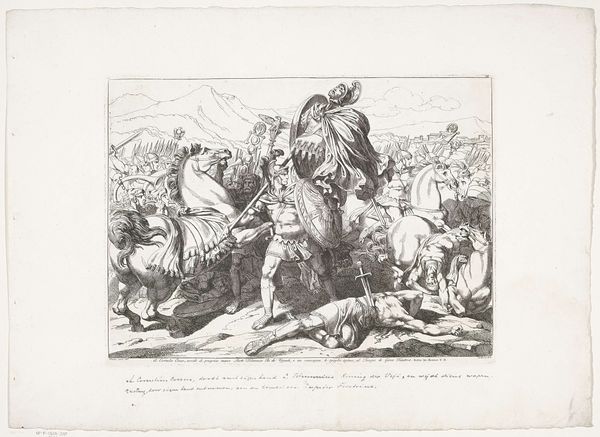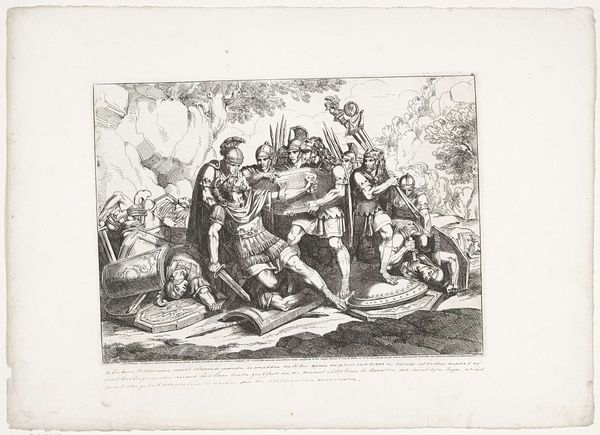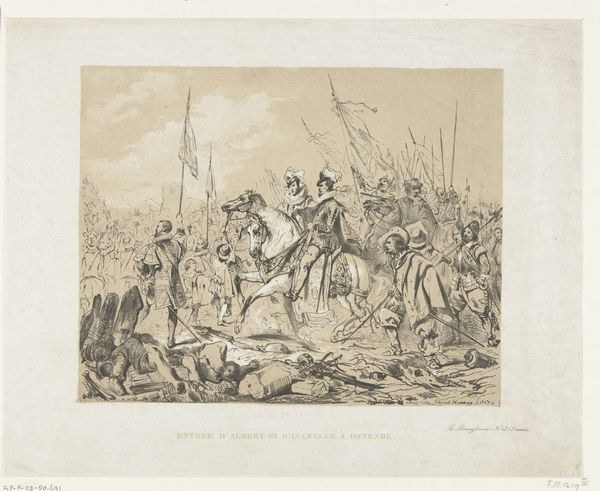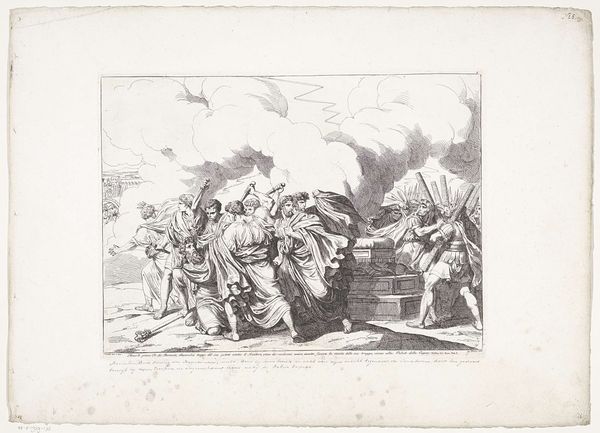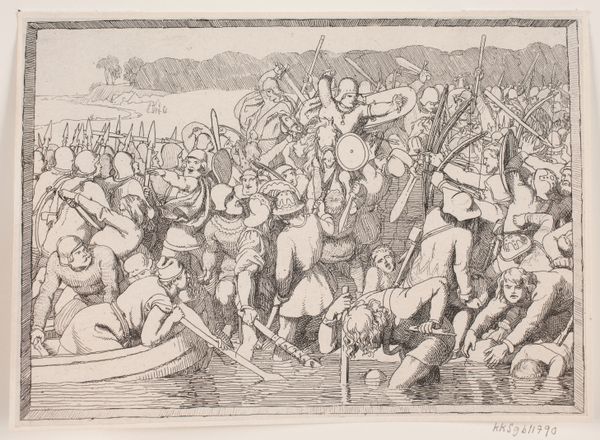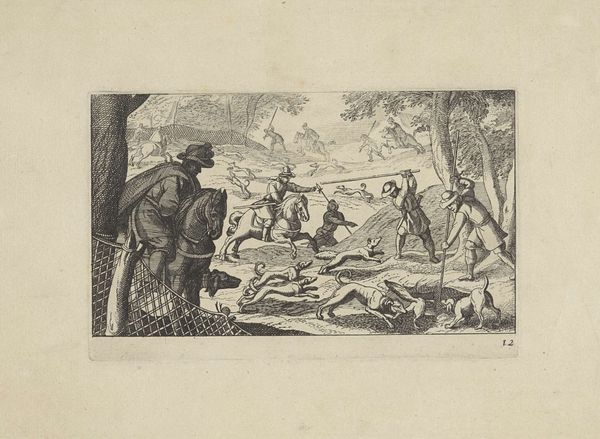
drawing, print, etching
#
drawing
#
narrative-art
# print
#
etching
#
figuration
#
line
#
history-painting
Dimensions: height 316 mm, width 425 mm
Copyright: Rijks Museum: Open Domain
Curator: Bartolomeo Pinelli created this etching, “Slag bij de Cremera,” in 1819. What stands out to you when you first see it? Editor: It's like a visual shout! A tangled, desperate mess of bodies and shields, all rendered in furious lines. You can almost hear the clashing of metal. It's less a glorious battle scene and more of a chaotic struggle for survival, don't you think? Curator: I see your point. The composition definitely emphasizes the close-quarters combat and the overall feeling of disarray, reflecting perhaps on the changing notions of heroism and warfare at the beginning of the 19th century. It's an etching, a relatively accessible medium that allows for the wider distribution of such images, influencing public perception of historical events and their leaders. How do you see the influence of production, material, and audience here? Editor: I hadn't thought about it that way, that Pinelli’s work is like historical reportage available at a popular price! But what is particularly moving is not just how it captures movement and the clamor, but the human element—look at that soldier, the figure clinging to another's leg on the ground there! Curator: That’s right. The artist’s rendering of individual soldiers allows for a study of varying levels of Roman soldiery, their equipment, and even the subtle differences in how their uniforms may have been rendered on copper plates and eventually transferred into etching, speaking to a wide audience eager to connect with their nation’s storied past, not as glorious myth but bloody and imperfect reality. Editor: You are suggesting, of course, that the use of line etching allows for replication in vast amounts and also for people of all class status to afford this glimpse of what took place on this field of honor, which had previously only been held in the realms of those with aristocratic backgrounds! Is that correct? Curator: Indeed. Through the mediation of this print, made possible through skilled hands at a reasonable production cost, ancient battles can move off the battlefield and onto the walls of burgeoning nationalists across Europe, making “Slag bij de Cremera" much more than merely history; instead, it's a means to engage an emerging citizenry, not through pomp and circumstance, but through grit and grime of a day’s toil on the Italian Peninsula. Editor: Well, seeing it like that changes everything. From furious scribbles to the seeds of nationalism... who knew? Thank you.
Comments
No comments
Be the first to comment and join the conversation on the ultimate creative platform.
